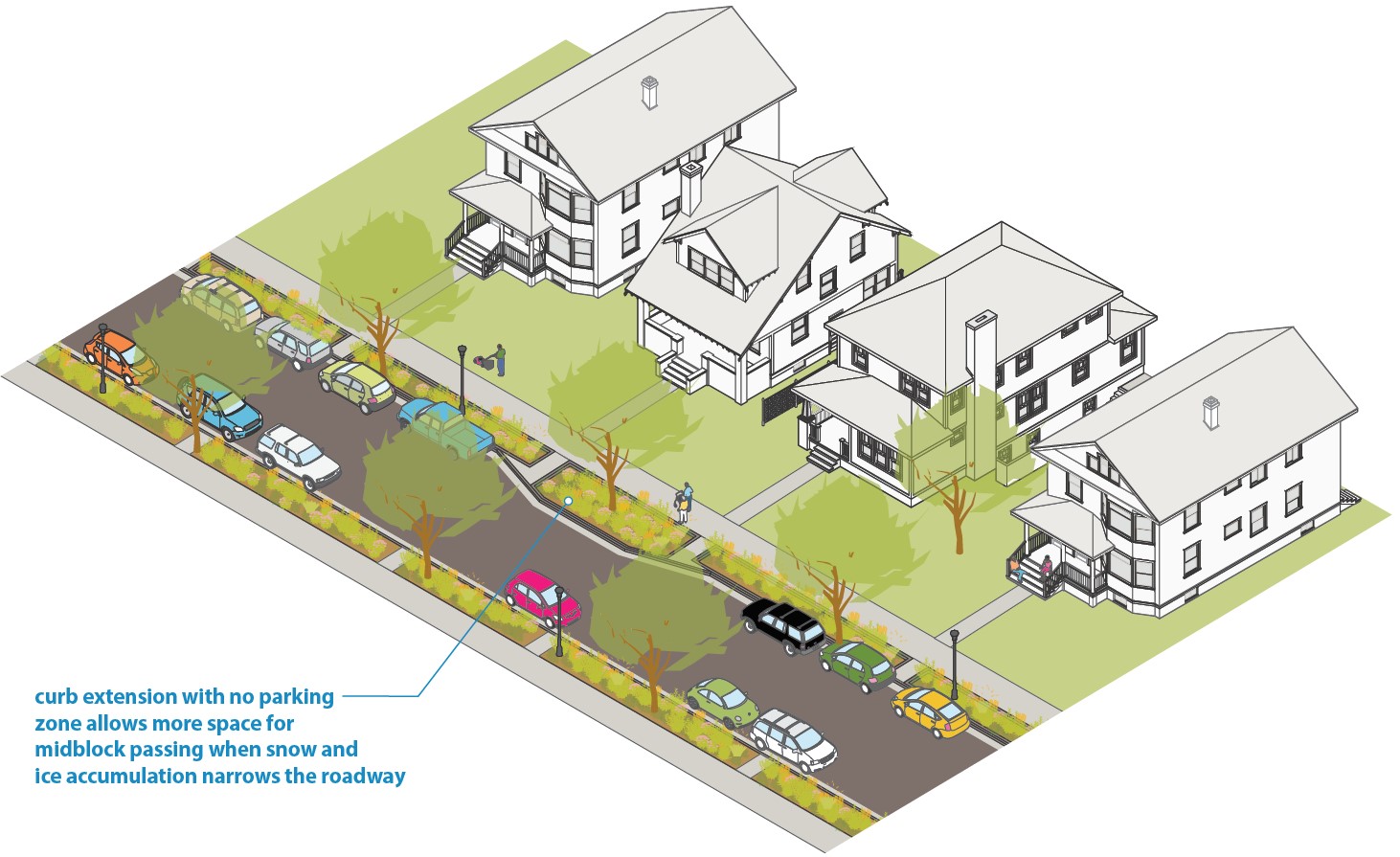Urban Neighborhood Streets with High Parking Demand
Search Content
Download PDF
Print Guide
Urban Neighborhood streets with high parking demand
Urban Neighborhood streets with higher than 75% average parking utilization should be designed to ensure winter access can be maintained.
The preferred way to support winter access is to provide one or more midblock passing points where a curb extension replaces parking on one side (see Figure 3.6B.3). Such a zone provides space for a vehicle to pull over and allow another car to pass when snow and ice buildup has narrowed the driving area.
In cases where creating midblock passing points is not feasible, use a 32’ wide two-way street with parking on both sides, a 30’ wide one-way street with parking on both sides, or a 26’ wide street with parking on one side.
Figure 3.6B.3:
Curb extension for midblock passing point
Design considerations for midblock passing points
|
Midblock passing points |
Midblock passing points should be implemented with a curb extension that replaces parking on one side of the street. |
|
Curb extension |
Midblock passing points should be implemented with a curb extension that replaces parking on one side of the street. |
|
Roadway |
The roadway should be 26-27’ wide adjacent to the pull-over point, including parking on one side. |


